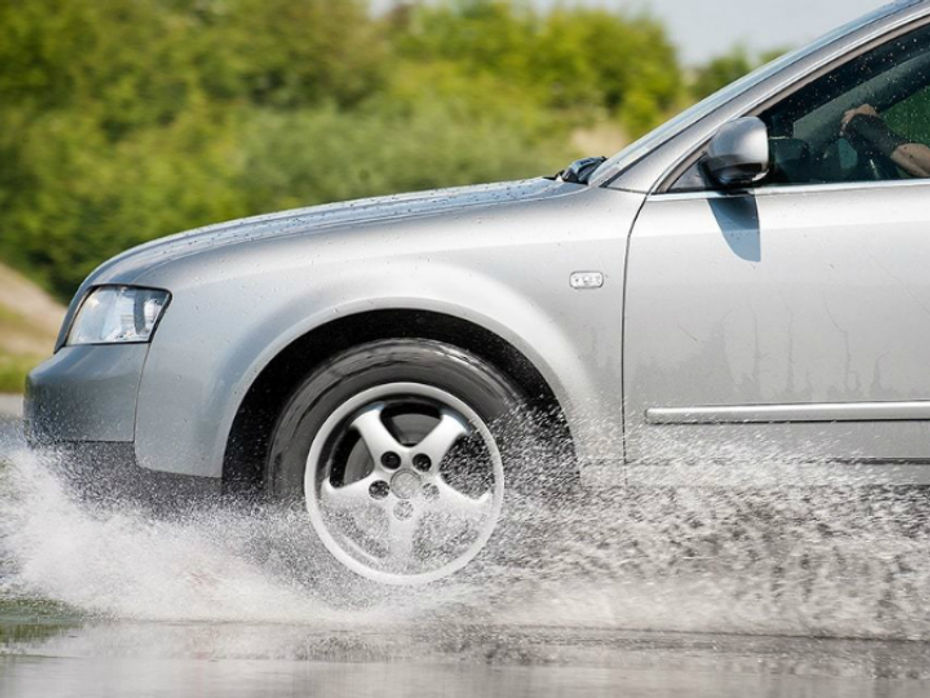
Volkswagen Developing Sub-4m Crossover, Could Be India-bound
- Apr 12, 2018
- Views : 2603


Aquaplaning is a phenomenon which even the best of the best drivers cannot predict and take remedied steps against. It happens when the front tyres of the car lose grip with the road as they start riding on a layer of water, which leads to a complete loss of control as braking and steering inputs fail to work and thereby increases the potential for serious accidents. Automotive technology developer and manufacturer, Continental, is working on a safety system which could detect potential aquaplaning situations and warn drivers or autonomous systems of the same and consequently prevent accidents.
The Continental Road Condition Observer Concept is currently under development and uses an array of cameras, tyre sensors and a custom software to predict if the road conditions could provoke the car to aquaplane. The software reads the splash and spray patterns from the tyres using cameras mounted on the mirrors and the boot to analyse if they are displacing water as they are designed to. The system detects when these patterns change and indicate the possibility of aquaplaning.
Tyre-mounted eTIS (electronic tyre information system) sensors are also used to help detect potential chances of aquaplaning. These sensors, mounted on the inner lining of the tyres, send accelerometer readings and tread depth information to the system software. The change in acceleration as the characteristic ‘wedge’ begins to appear in front of the tyre at the onset of aquaplaning triggers a warning.

For now, Continental’s system can only warn drivers of potential aquaplaning situations. The company is looking at making the system more robust with features like active speed recommendation, sending warnings to other road users via V2X or eHorizon technologies and, at an advanced stage, being able to intervene before or during an aquaplaning incident by controlling the rear brakes. In the future, data from the Road Condition Observer could also be used to make a real-time virtual map of road conditions, saving countless people from experiencing terrible accidents. The virtual map can also be used to detect sections of roads which can be improved to prevent such incidents.
For now, it is recommended that drivers be aware of the tread depth on their tyres, taking care not to let go below the 3mm mark, and take it slow when driving on wet roads.

Volkswagen Developing Sub-4m Crossover, Could Be India-bound

Scomadi Scooter To Hit Indian Shores

2018 Mahindra XUV500 Facelift To Be Launched On April 18

TVS Apache RTR 160 Race Edition Launched

Auto Expo 2025 - All You Want To Know About The Hottest Auto Show!

Mahindra BE 6 Launched: Price For The Top-spec Variant Is Out!

Volkswagen Golf GTI Set For India Launch In Mid 2025, Top 5 Things...

JSW MG Motor India Revealed Their New SUV, The MG Majestor At Auto...

Auto Expo 2025: Tata Sierra ICE Concept Breaks Cover, All Details...

VinFast VF3 vs MG Comet EV: A Detailed Comparison Of The Two Cute And...
India's largest automotive community
 Kia Syros
Rs. 8.99 Lakh
Kia Syros
Rs. 8.99 Lakh
 Vayve Mobility Eva
Rs. 3.25 Lakh
Vayve Mobility Eva
Rs. 3.25 Lakh
 BMW X3
Rs. 75.80 Lakh
BMW X3
Rs. 75.80 Lakh
 Hyundai Creta Electric
Rs. 17.99 Lakh
Hyundai Creta Electric
Rs. 17.99 Lakh
 Lotus Emira
Rs. 3.22 Crore
Lotus Emira
Rs. 3.22 Crore